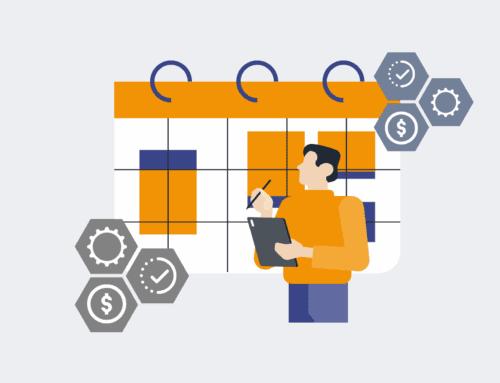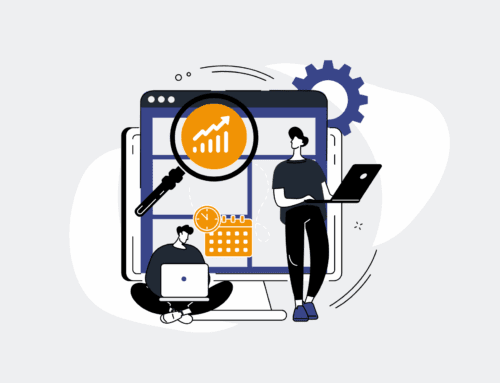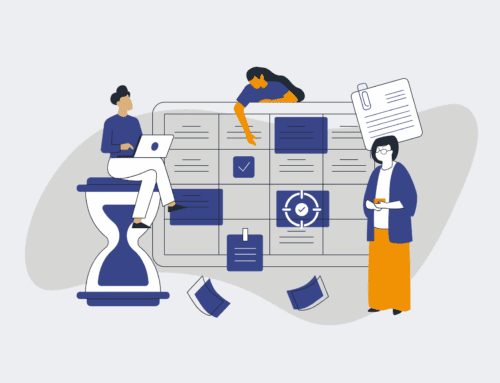6 Transformative Applications of AI & Automation for Modern HR & Recruiting
In today’s fast-paced business landscape, HR and recruiting departments are often at the forefront of operational challenges. Manual processes, repetitive tasks, and inefficient workflows don’t just consume valuable time; they stifle growth, hinder candidate experience, and prevent HR leaders from focusing on strategic initiatives that truly impact the bottom line. The promise of “doing more with less” often translates into burnout and decreased efficiency. But what if there was a way to reclaim 25% of your day, not by working harder, but by working smarter? This isn’t a pipe dream; it’s the tangible reality made possible by integrating AI and automation into your core HR and recruiting functions.
At 4Spot Consulting, we’ve seen firsthand how high-growth B2B companies can revolutionize their operations by strategically applying automation and AI. It’s about more than just adopting new technology; it’s about re-engineering workflows to eliminate human error, drastically reduce operational costs, and build a scalable infrastructure that supports rapid expansion. For HR and recruiting professionals, this means moving beyond the transactional and embracing a future where talent acquisition and management are powered by intelligent systems. This article explores six pivotal applications where AI and automation are not just enhancing, but truly transforming HR and recruiting, offering practical value and actionable insights for leaders ready to drive real change.
1. Intelligent Candidate Sourcing and Pre-Screening Automation
The initial stages of recruitment, from identifying potential candidates to sifting through hundreds of applications, are notoriously time-consuming and often riddled with bias. Manual sourcing across multiple platforms and the laborious process of resume review can delay critical hires and lead to missed opportunities. This is where AI and automation step in as game-changers. By leveraging AI-powered tools, HR teams can automate the search for qualified candidates across various databases, social media, and professional networks. These systems can quickly identify profiles that match specific job requirements, filtering candidates based on skills, experience, and even cultural fit indicators, significantly broadening the talent pool beyond active applicants.
Furthermore, automation can handle the initial pre-screening phase with remarkable efficiency. AI can parse resumes, extract key information, and compare it against job descriptions with a level of detail and consistency human reviewers simply cannot match. This includes identifying specific keywords, assessing relevant experience duration, and even flagging potential red flags or outstanding qualifications. Some advanced systems can conduct initial digital interviews using chatbots or pre-recorded video questions, analyzing responses for keywords, tone, and even non-verbal cues to provide a preliminary score or recommendation. This automated pre-screening drastically reduces the volume of unqualified candidates reaching human recruiters, freeing up valuable time for strategic engagement with top-tier talent. It’s about ensuring every minute a recruiter spends is on meaningful interaction, not mundane data extraction. Our OpsBuild™ approach frequently incorporates these types of intelligent integrations using tools like Make.com to connect disparate systems and create a seamless, automated sourcing pipeline.
2. Streamlined Onboarding and Offboarding Workflows
The employee journey extends far beyond the hiring decision, and the efficiency of onboarding and offboarding processes significantly impacts employee satisfaction, retention, and compliance. Manual paperwork, inconsistent communication, and disjointed systems often lead to a less-than-ideal experience for new hires and potential compliance risks during departures. Automation provides a robust solution, transforming these critical HR functions into smooth, error-free experiences.
For onboarding, automation can trigger a sequence of actions the moment an offer is accepted. This includes automatically generating offer letters and contracts (often integrated with tools like PandaDoc), initiating background checks, setting up IT access, enrolling the new hire in benefits programs, and assigning a mentor. Personalized welcome emails, pre-boarding materials, and access to company resources can be delivered automatically, ensuring the new employee feels valued and prepared from day one. This significantly reduces the administrative burden on HR staff, allowing them to focus on personalized introductions and cultural integration. Similarly, offboarding can be automated to ensure all necessary steps are completed systematically: access revocation, final pay processing, exit interviews, and document archiving. This minimizes security risks, ensures compliance with legal requirements, and maintains a positive relationship with departing employees. By establishing clear, automated workflows, companies can eliminate the risk of forgotten steps or inconsistent application of policies, ensuring a professional and compliant process every time. This systematic approach, central to our OpsMesh™ framework, ensures that no detail is overlooked, saving countless hours and preventing costly errors.
3. AI-Enhanced Candidate Engagement and Communication
In a competitive talent market, providing an exceptional candidate experience is paramount. However, human recruiters often struggle to maintain consistent, personalized communication with a large volume of applicants, leading to drop-offs and a negative brand perception. AI and automation can bridge this gap, ensuring candidates feel informed and valued throughout their journey, without overwhelming your team.
AI-powered chatbots, for instance, can provide instant answers to frequently asked questions about job descriptions, company culture, benefits, or application status, 24/7. This immediate response capability significantly improves candidate satisfaction and reduces the number of inbound calls and emails to HR. Beyond simple FAQs, these chatbots can guide candidates through the application process, help schedule interviews (integrating directly with calendars), and even conduct preliminary screening questions, feeding the responses directly into your CRM system like Keap. Automation can also personalize follow-up communications. Based on a candidate’s stage in the hiring pipeline, automated emails or messages can be sent – from “thank you for applying” to “we’d like to invite you for an interview” – ensuring timely and relevant updates. This level of proactive, personalized communication, often facilitated by tools like Unipile or Bland AI for voice interactions, keeps candidates engaged and warm, significantly reducing ghosting and improving your offer acceptance rates. It transforms a potentially impersonal process into a highly responsive and engaging experience, making your organization stand out in a crowded market.
4. Data-Driven HR Analytics and Reporting Automation
Traditional HR reporting can be a manual, time-consuming chore involving data extraction from multiple systems, spreadsheet manipulation, and the creation of static reports that are often outdated the moment they’re generated. This reactive approach prevents HR from acting as a truly strategic partner to the business. Automation, combined with AI, transforms HR data into a powerful tool for informed decision-making.
By automating data collection from your applicant tracking system (ATS), HRIS, payroll, and performance management platforms, HR leaders gain access to real-time, comprehensive insights. Automation tools can consolidate this data into a single source of truth, eliminating discrepancies and ensuring accuracy. AI algorithms can then analyze this aggregated data to identify trends, predict future outcomes, and highlight areas for improvement. For example, AI can predict attrition risk based on various employee data points, identify which sourcing channels yield the highest quality hires, or pinpoint correlations between training programs and employee performance. Automated dashboards and reports can be generated daily, weekly, or monthly, providing HR and executive leadership with instant visibility into key metrics like time-to-hire, cost-per-hire, diversity statistics, turnover rates, and employee engagement scores. This capability moves HR beyond descriptive reporting to predictive and prescriptive analytics, allowing for proactive interventions and evidence-based strategic planning. Imagine knowing precisely which recruitment strategies deliver the best ROI or being able to anticipate and address employee dissatisfaction before it escalates. This level of data empowerment is a cornerstone of our OpsMap™ diagnostic, where we help clients identify precisely which data points, when automated, unlock the greatest strategic value.
5. Proactive Employee Experience Automation
While much focus is often placed on external candidates, the employee experience within an organization is equally crucial for retention, productivity, and overall business success. High-value employees frequently get bogged down with low-value administrative tasks, or spend excessive time searching for information, detracting from their core responsibilities. Automation and AI can significantly enhance the internal employee experience, freeing up time and fostering a more productive environment.
Consider the myriad internal queries HR departments receive: benefits questions, policy clarifications, PTO requests, or IT support. An AI-powered internal knowledge base or chatbot can provide instant answers, routing complex queries to the appropriate human expert only when necessary. This drastically reduces the burden on HR and support teams while empowering employees with self-service options. Beyond information retrieval, automation can streamline internal processes like performance review scheduling, training course enrollment, internal job applications, and even peer recognition programs. For example, automated reminders can prompt employees and managers for performance review submissions, ensuring the process stays on track. Expense reporting can be made seamless with automated approval workflows. The goal is to remove friction points from daily work life, allowing employees to focus on their creative and high-impact tasks. By taking the repetitive administrative load off their shoulders, organizations signal that they value their employees’ time and expertise. This strategic application of automation not only boosts morale but directly contributes to the 25% daily time savings we aim to deliver for our clients by eliminating low-value work from high-value employees.
6. Compliance & Risk Management Automation
For HR, navigating the complex landscape of regulatory compliance is a constant challenge. Non-compliance can lead to significant fines, legal disputes, and reputational damage. Manual compliance processes are prone to human error, missed deadlines, and inconsistent application of policies, especially in large or rapidly growing organizations. AI and automation offer a robust solution to mitigate these risks and ensure consistent adherence to legal and internal standards.
Automation can play a critical role in managing and disseminating policy updates, ensuring all employees receive, acknowledge, and understand new regulations or internal guidelines. Systems can automatically track acknowledgement and flag non-compliance. For document management, tools can automate the generation, signing (e.g., via PandaDoc integration), and secure storage of critical HR documents like employee contracts, non-disclosure agreements, and performance improvement plans, maintaining an immutable audit trail. AI can even assist in monitoring for potential compliance risks by analyzing internal communications or employee feedback for specific keywords or patterns that might indicate a compliance breach, allowing for proactive intervention. Furthermore, in recruitment, automation can ensure fair hiring practices by anonymizing candidate data to reduce unconscious bias during initial screening, or by standardizing interview questions and evaluation criteria. By building automated workflows that embed compliance checks at every stage – from the initial job posting to employee offboarding – organizations can significantly reduce their exposure to legal and financial risks. This proactive approach to compliance not only safeguards the business but also instills confidence in employees and stakeholders, proving that an organized, compliant operation is an efficient operation.
The journey to modern HR and recruiting isn’t about replacing human intuition, but augmenting it with intelligent systems. By embracing these six transformative applications of AI and automation, HR leaders and recruiting directors can move beyond operational bottlenecks and become true strategic partners, driving growth, enhancing employee satisfaction, and ultimately, saving your business 25% of its day. The future of HR is here, and it’s automated, intelligent, and incredibly efficient.
If you would like to read more, we recommend this article: The Keap Automation ROI Calculator: From Justification to Transformative HR









